
Disclaimer: This blog entry wasn’t written until seven years after the trip. It should be noted that this was a huge mistake. Sometimes after writing so much about other days, it happens that at the time directly after the trip or even during, I convince myself that the details are not that important. Years later, these details are that important, and pulling them out of foggy memories is difficult. The photos help and often leave clues, and then Caroline’s memories are usually far clearer than mine. With that said, here goes.
Wait a minute, I’m not ready to go home. With just a few days left in Europe and having already been on a few road trips, I thought we could squeeze in one more. To have spent a month here and only visited four countries felt wrong; I just knew that if we could hit a fifth, I’d feel complete. So, after a whole day back in Frankfurt, we got back in the rental car and headed south. The first stop on our way to France was in Speyer, Germany.
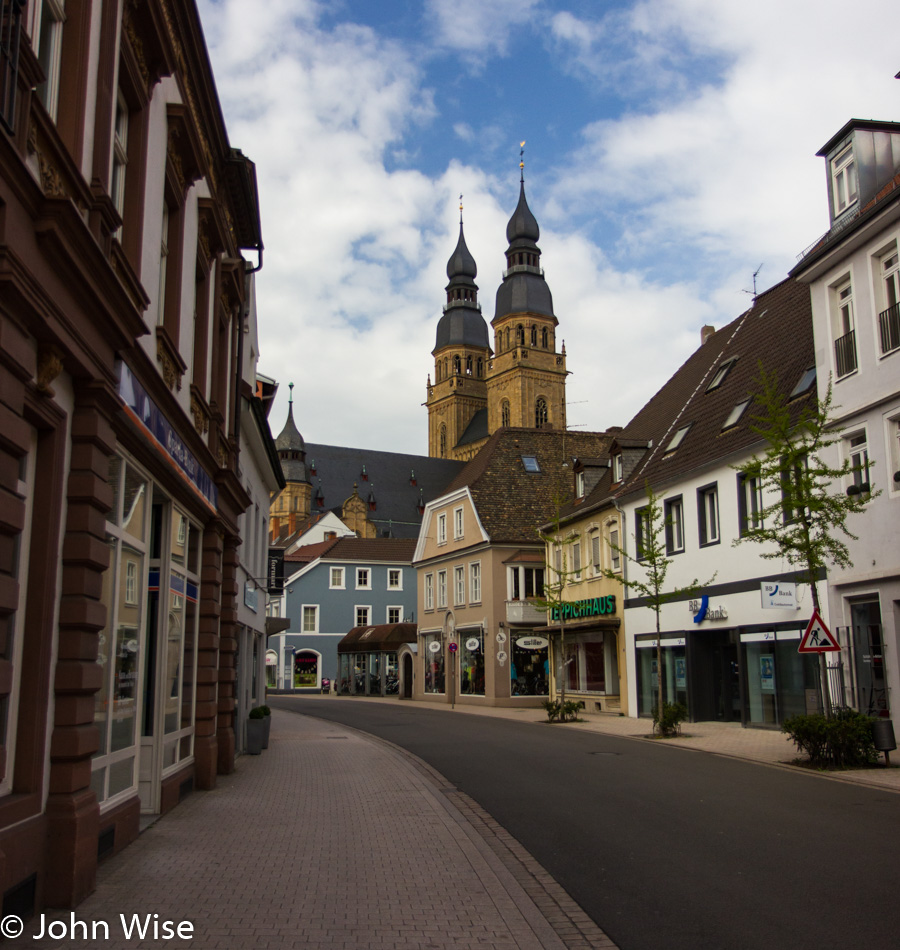
Ten years before Christ, some Romans camped here, but back then, Speyer didn’t exist, and it really was only a camp along the Rhine River. One hundred sixty years later, there was an official Roman village going by the name Noviomagus. But then the Roman Empire crumbles and some Teutonic Nemetes move into the area and call their settlement Civitas Nemetum. By the 5th century, that village was destroyed. For nearly 200 years, nothing much happened until the 7th century when the city of Spira rose on these lands. By 1030, the town of Speyer needs a cathedral and work gets underway, and we are deep in the Holy Roman Empire. Soon after that, a Jewish community was established, but by 1349 it was destroyed.
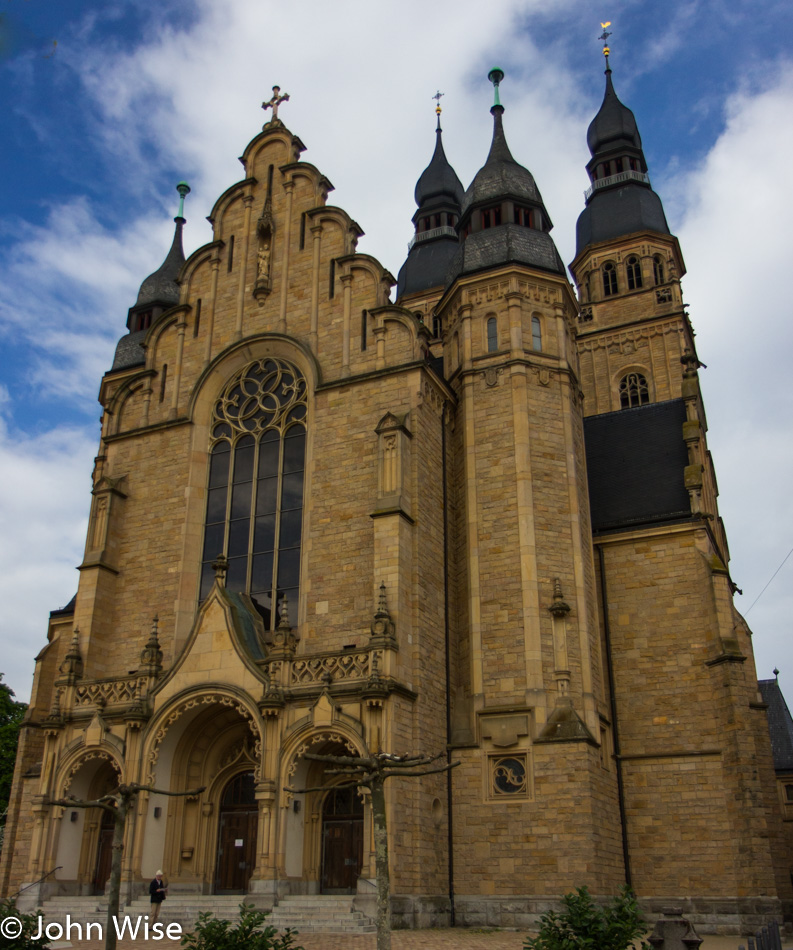
And that, more or less, brings us to today. Okay, there is that part of the Holy Roman Empire going on for another 500 years until the Napoleonic Wars brought that to an end in 1806, but this isn’t some kind of history lesson. We are tourists out for ice cream and lounging in the sun as soon as we visit some churches. First up was St. Joseph’s Church, but we didn’t go in there because it wasn’t built until 1914 and we don’t visit churches that are under 200 years old.

Oh, this looks promising: the Gedächtniskirche der Protestation or, in English, The Memorial Church of the Protestation. Started building in 1893 and was completed in 1904; too bad about our requirements for the 200-year-old thing, nobody can be expected to make the effort to visit two churches and not go in at least one of them, so here we go.
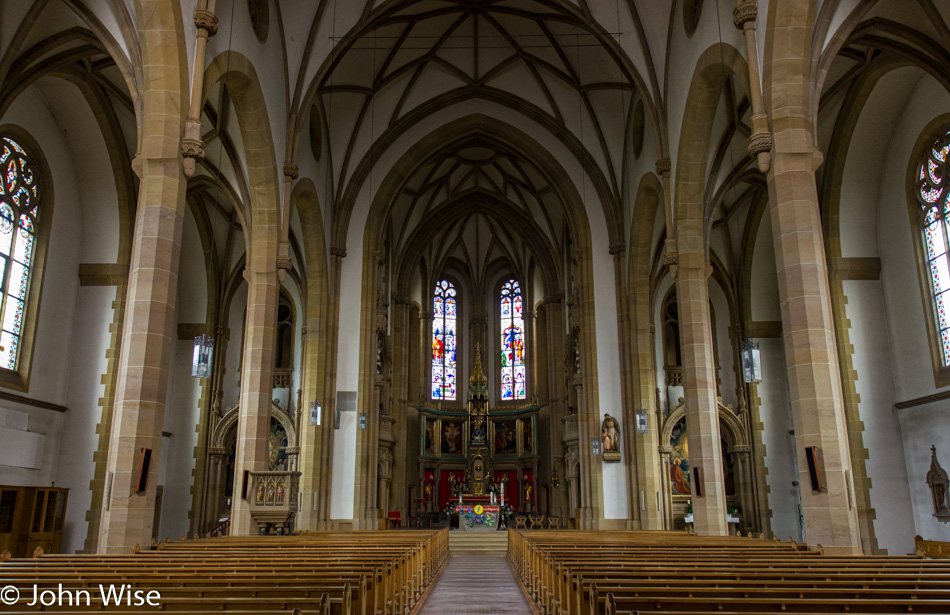
Great, we couldn’t enter The Memorial Church of the Protestation, so we went back to St. Joseph as by now we really needed some church. Hmmm, it looks adequately old to me. Now it’s time to go make my protestation to the local authorities.
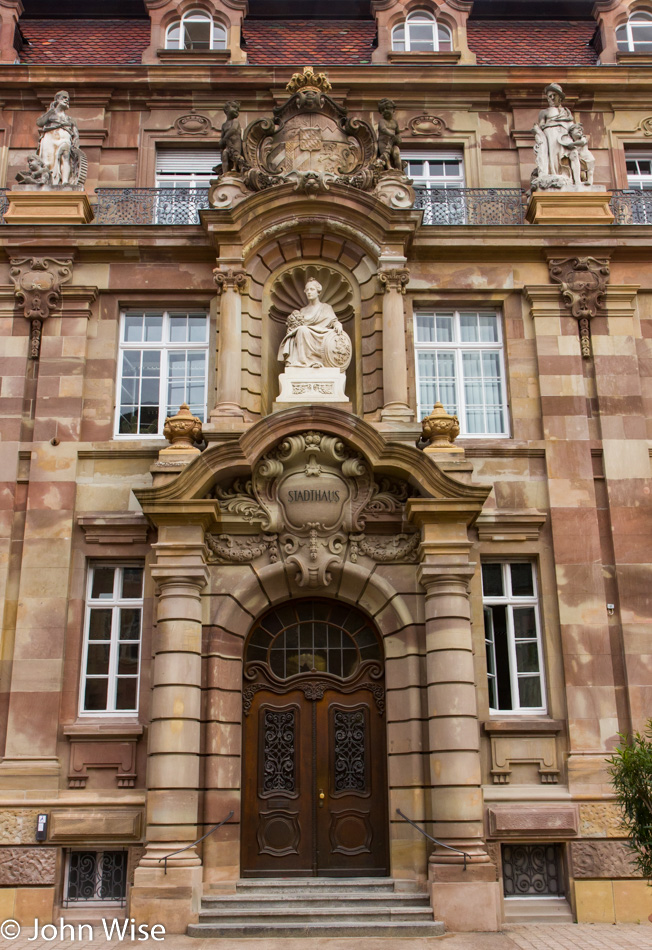
Right on over to City Hall, and wouldn’t you know it? They were closed! Lucky for them, I was going to go on the Internet and write the worst review ever of Speyer when someone on the street, seeing our need for the kind of relief that only a visit to an old church can offer, directed us over to the Speyer Cathedral. But first, some history lessons.
So, if you’ve paid attention to this journey across Germany, you’ll know that almost a week ago, we were visiting the Wartburg in Eisenach looking for signs of Satan in the room where Martin Luther threw his inkpot at the appearance of Herr Böse Teufel a.k.a. The Evil One. Oh, I didn’t share that part? I guess I’ll have to go update that part of my blog because there were other details, like how when we didn’t find the devil, his buddy Mephistopheles showed up and momentarily possessed Caroline, Exorcist style, but the rest of the details will be found in my update over there. I swear.
Anyway, that’s not in any way the history I was looking to share. The city of Speyer, back on the 19th of April 1529, was the site where six princes and representatives of 14 Imperial Free Cities petitioned the Imperial Diet to lift the Imperial ban on Martin Luther and called for these Catholic blokes to allow the evangelical faith to do what it wilt. Crowley later came along and changed that quote to “Do what thou wilt,” but my understanding is that these things are connected, or was it when Caroline was possessed that the Dark Prince channeled this nonsense?
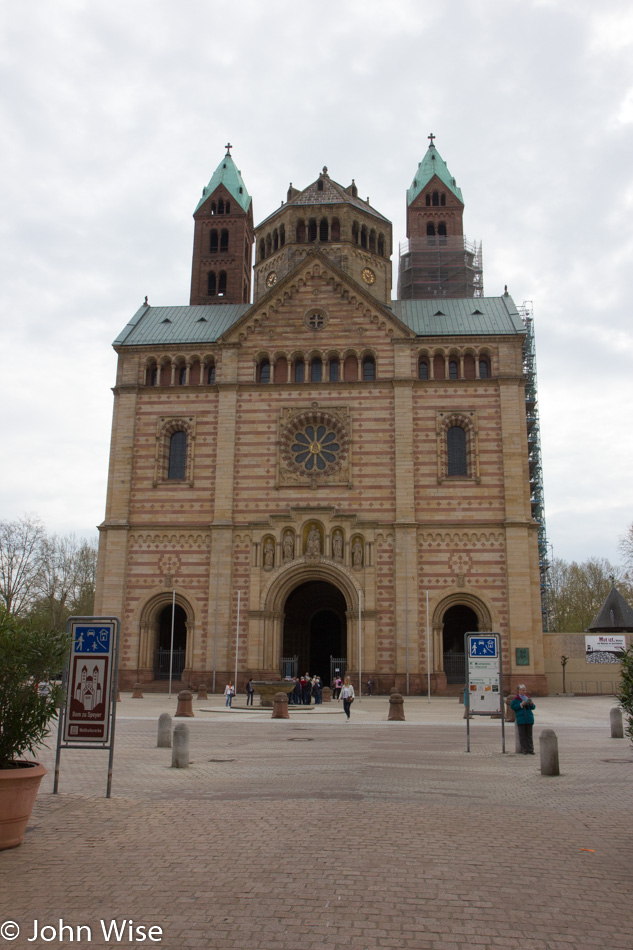
Speyer Cathedral, officially the Imperial Cathedral Basilica of the Assumption and St Stephen. Hopefully, by now, you aren’t wondering if anything is true and asking what is permitted. Of course, once in the life of my blog, I needed to reference this line from William Burroughs, who was quoting Betty Bouthoul’s 1936 book The Master of the Assassins: “Nothing is true, everything is permitted.” The astute reader, having dealt with my prior musings about defenestration, the Roman Empire and its Holy version, World War Zero, demons, classical music, wetlands, yarn, and a ton about food, is probably asking, “Are you including this literary reference for any particular reason?” And my answer is a resounding “No!” I need filler for this blog post because, as my disclaimer says above, this is written seven years after the event and I’m pulling from aging memories. What would you have to say about a 1000-year-old church built in the Romanesque style if this was your blog?
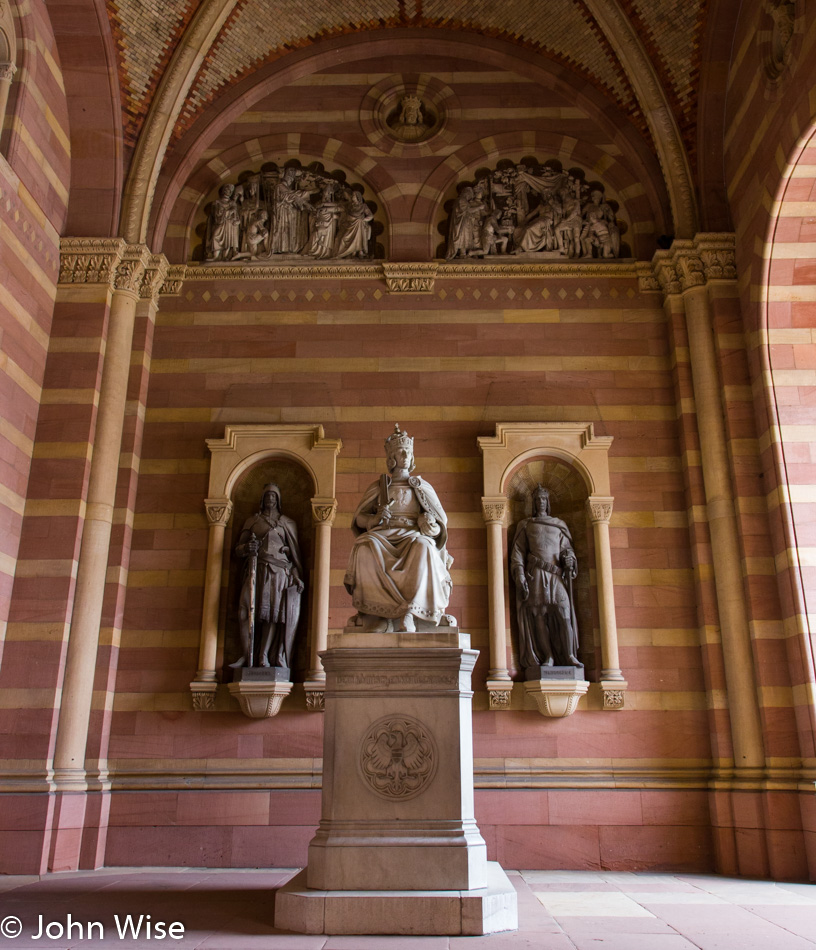
Well, isn’t this quite royal and majestic?

No time for altars when we can be rewarded with visiting the crypt where eight German Kings are entombed, with four of them having been crowned Holy Roman Emperors by the Pope. Due to ridiculous privacy laws in Germany, I’m not allowed to show their coffins, so here’s some empty corner of the crypt instead.
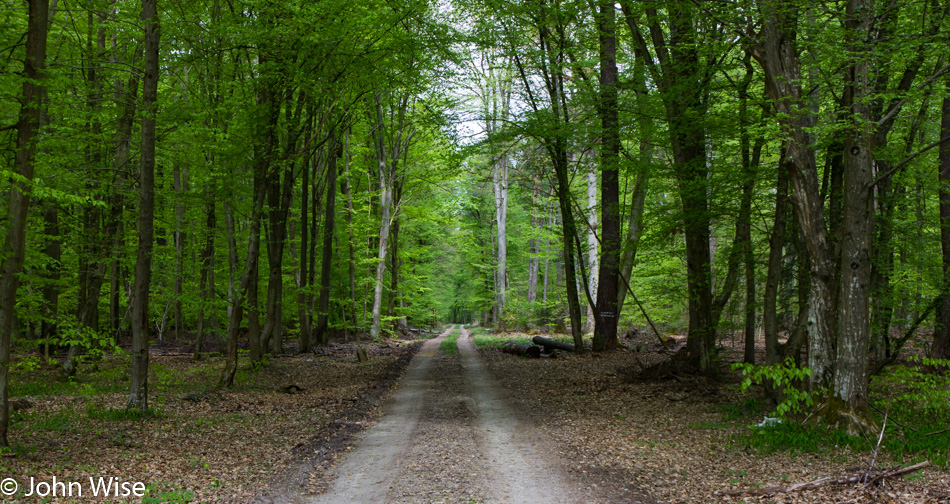
Down this road is the home that the 1997 movie Funny Games was based on, but this is as far as we got. If you’ve not seen that incredibly painful thriller, and I’m not talking about the lame 2007 remake, which was lame like the 2013 remake of OldBoy because the 2003 version of OldBoy from Park Chan-wook forced you to wash your eyes with bleach after seeing it and while I’m at it, Serbian Film was another one of those WTF did I just watch and is it even legal? So why didn’t we go further down the road to satisfy our interest in the macabre? Because this isn’t the road and the movie wasn’t based on a true story, I just liked looking into the forest here.

Have you figured out that my wife likes creepy crawlies?
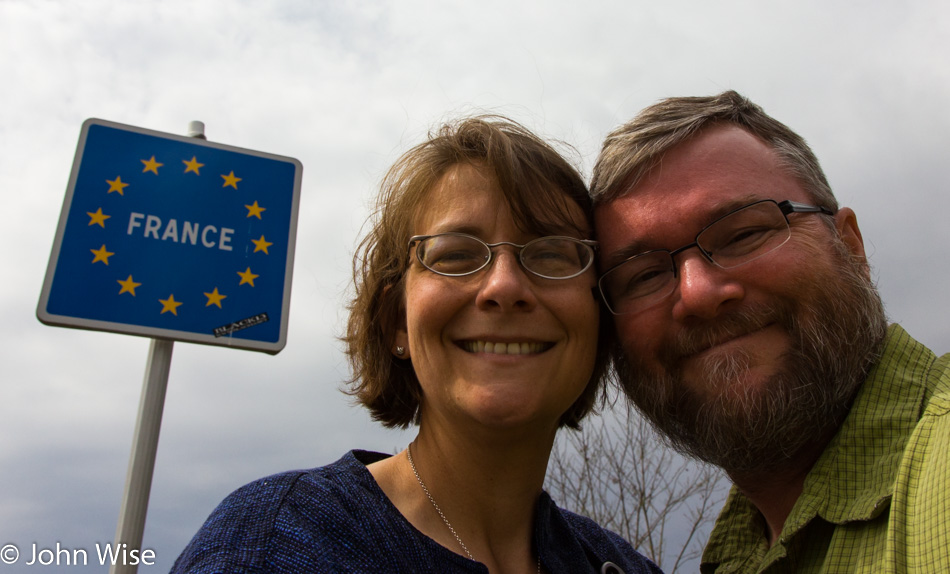
Speaking of creepy crawlies, here we are entering France.
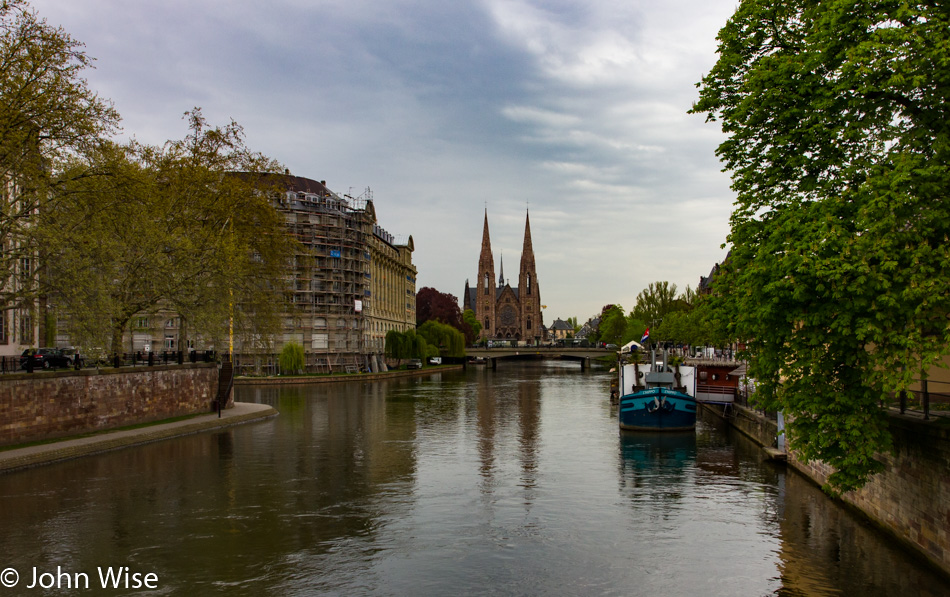
The car is parked, and we are on foot, ready to explore as much of Strasbourg as time allows. From here, we cross over the waters that originate in the Rhine River to enter the Grand Island.
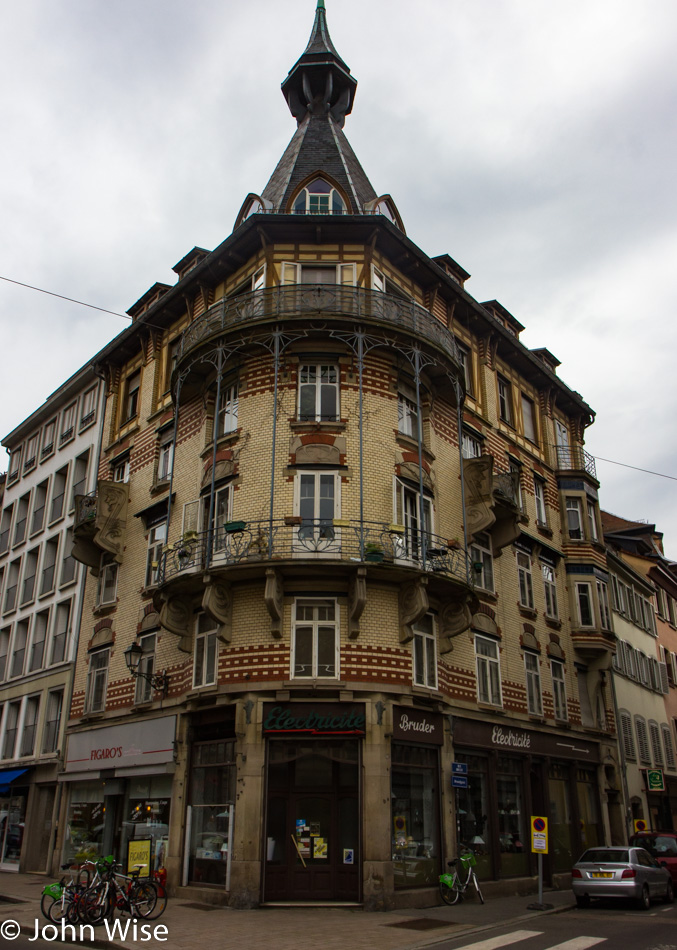
Not a monument, not a church, just a corner that looked interesting.

I love these kinds of views built before the need for wide, straight, long streets for cars. I could live here.

How many hundreds of years has this been accumulating grime and wear?
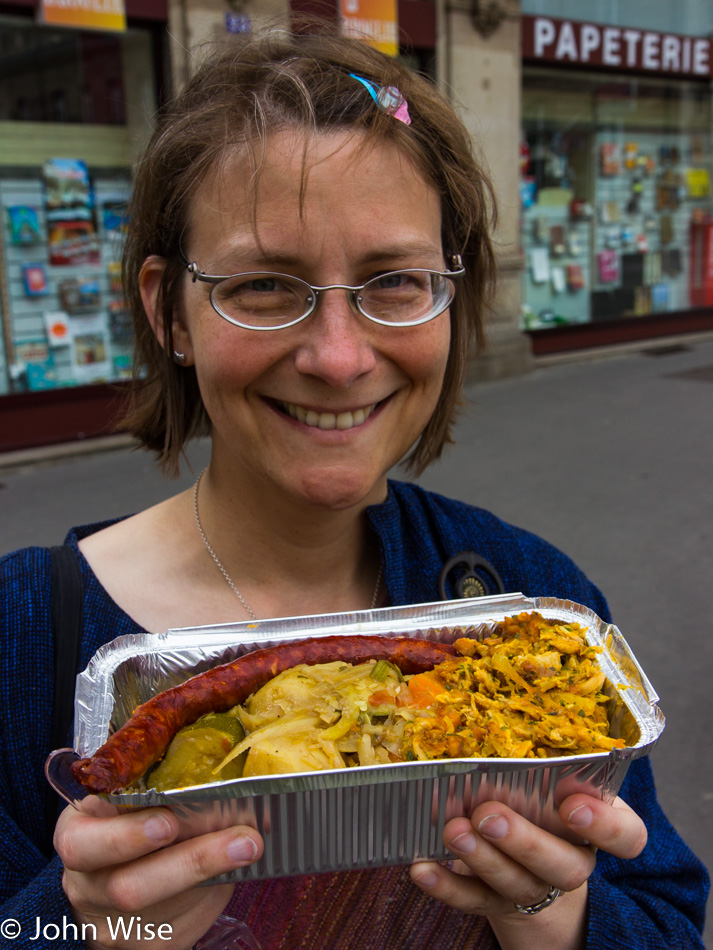
It looked very unfamiliar, so this just had to be lunch. We split it and I can’t tell you anything else about it except I see cabbage and sausage.
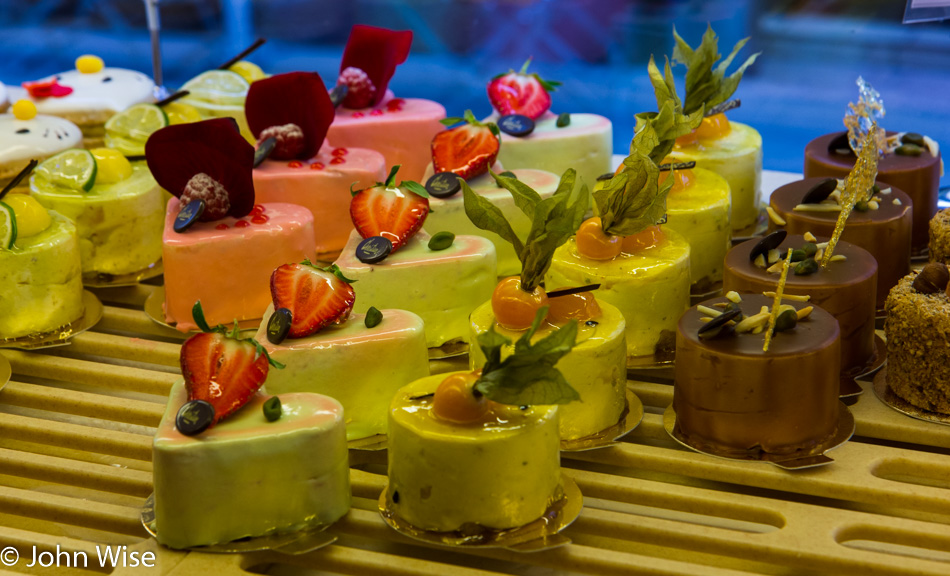
Nobody goes to France and stays away from sweets.

Nobody.
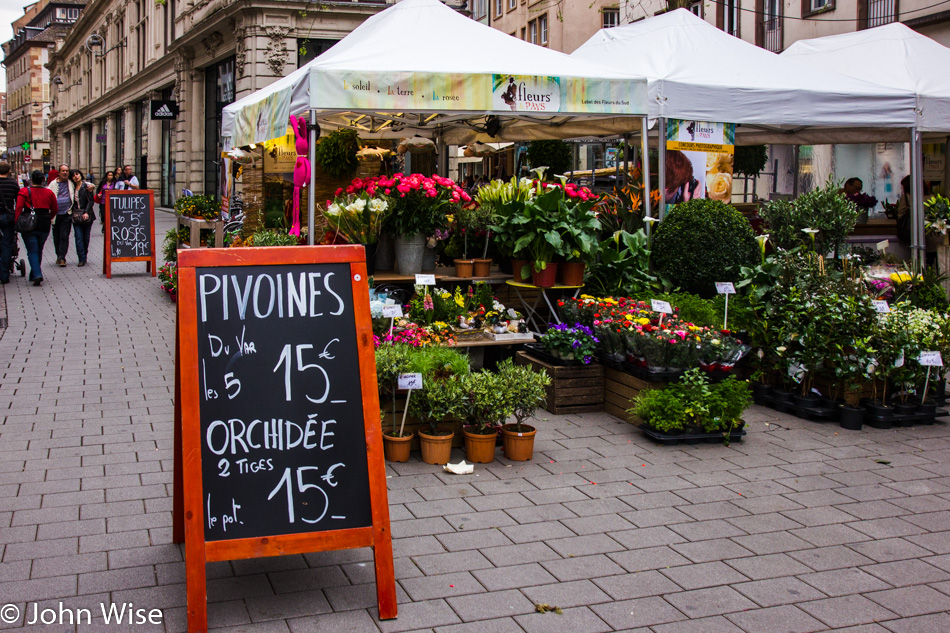
Streetside flowers…

…and rows of bicycles. Now we just need some pain (bread).
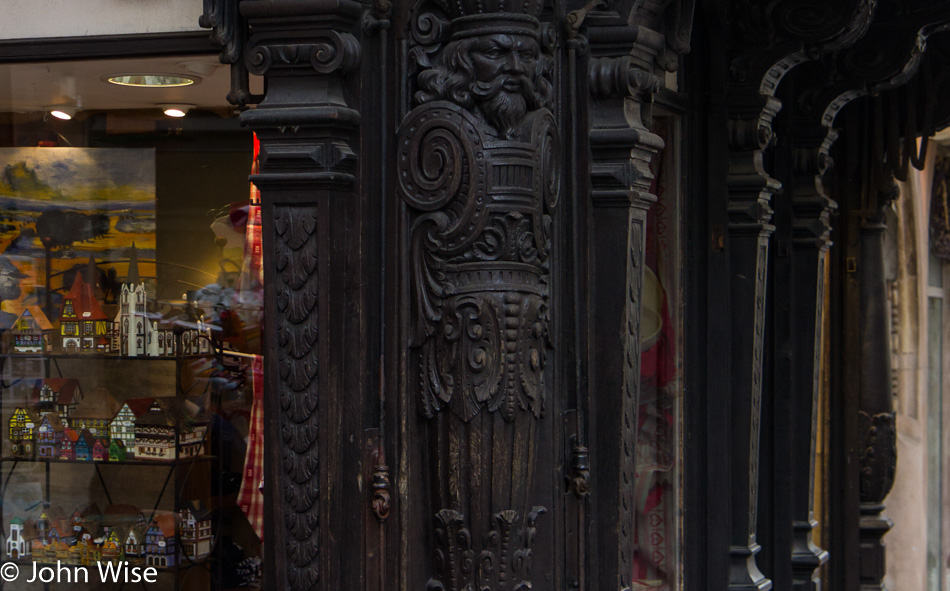
Should you pick up a hint of Germanic influence here, you’d be correct, as Strasbourg is right on the border, with most people here also speaking German.
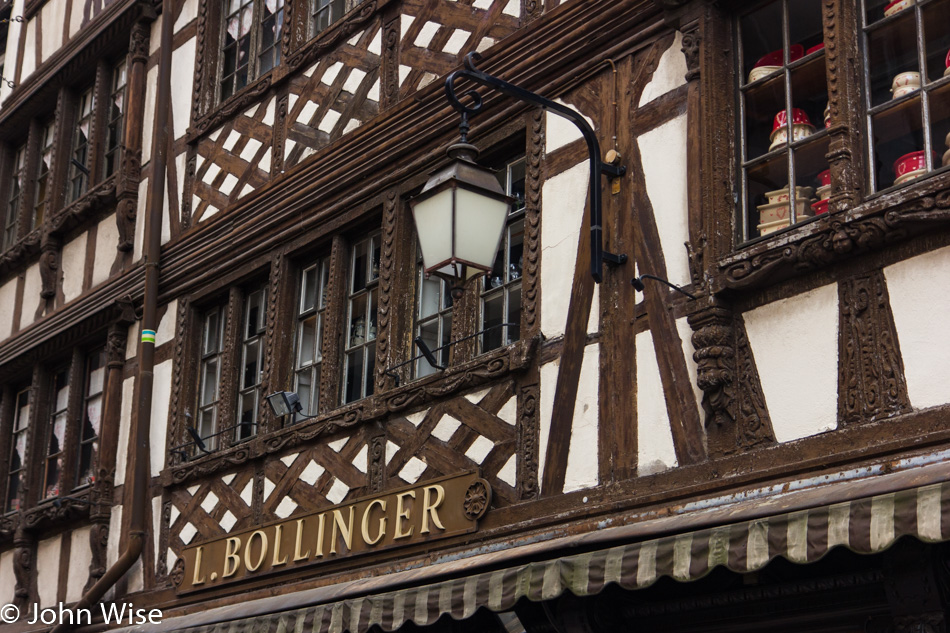
The famous Kammerzell House, built back in 1427 is both a restaurant and a small hotel. On the list to return to and stay a couple of nights.
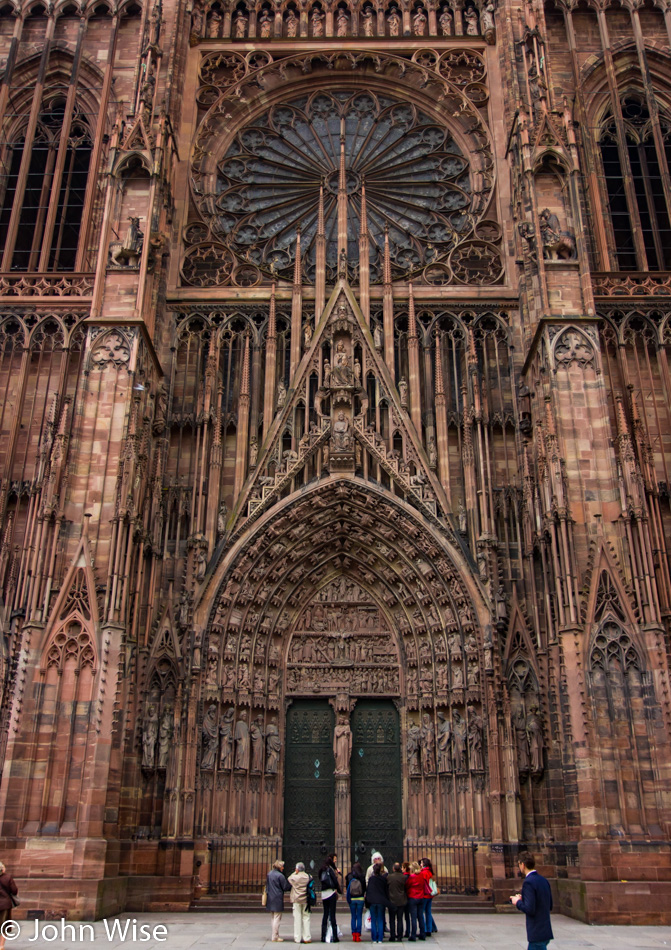
Started 998 years ago in 1015, the Strasbourg Cathedral reigned as the tallest building on earth for 227 years until 1874 when a church in Hamburg, Germany, grabbed the title.
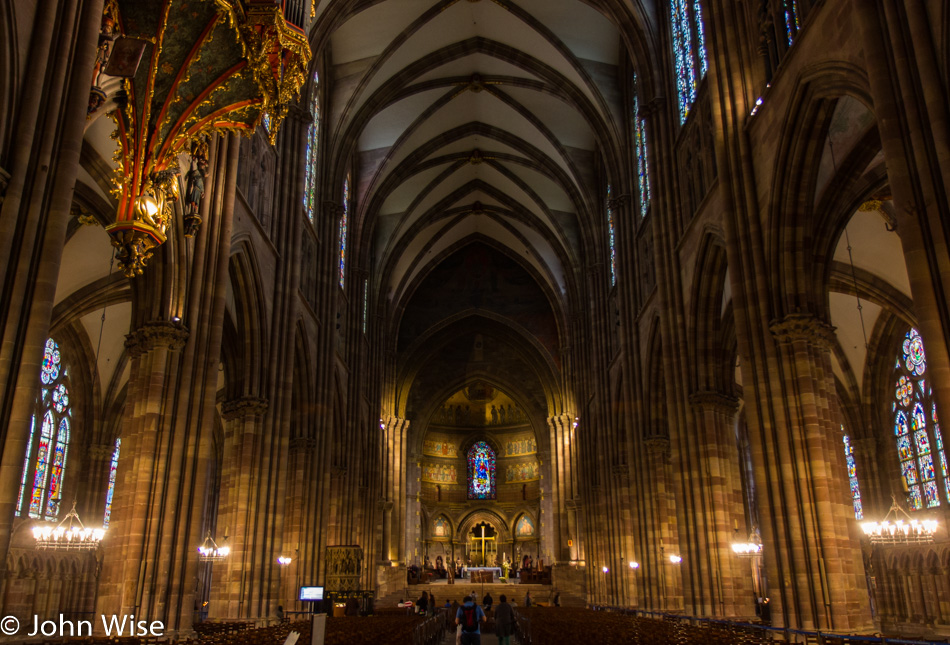
Majestic.
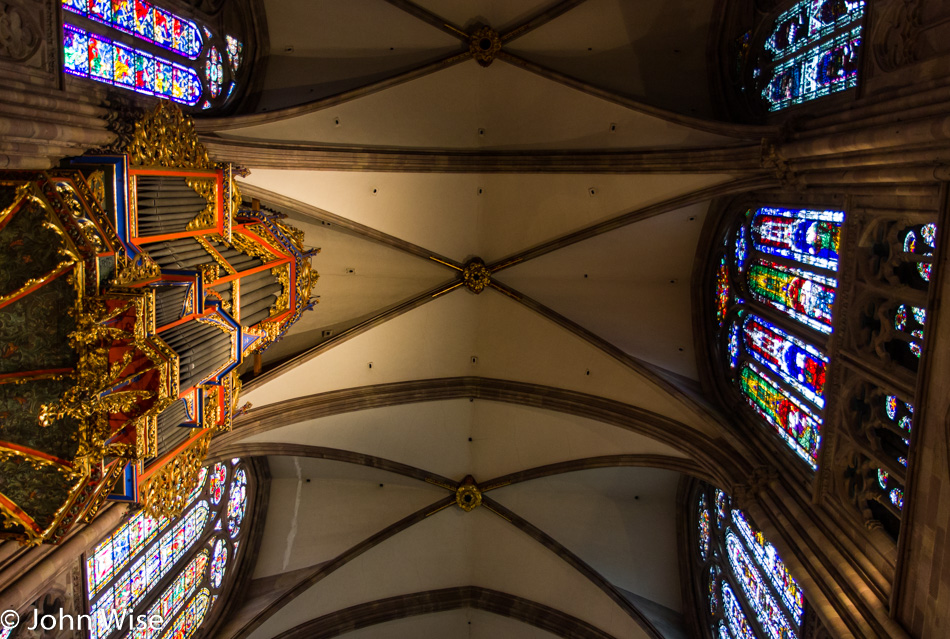
When we consider that these churches built a thousand years ago were done so by hand, I suppose it’s easy to understand why a cathedral such as this could take 424 years from start to finish. To those of us living in the 21st century, it’s inconceivable that a building might require 17 generations of people to have come and gone before the doors finally open for business. To gain a bit more perspective, it is as though your great-great-great-great-great-great-great-great-great-great-great-great-great-great-great-great grandfather was there when the first stone was laid down.
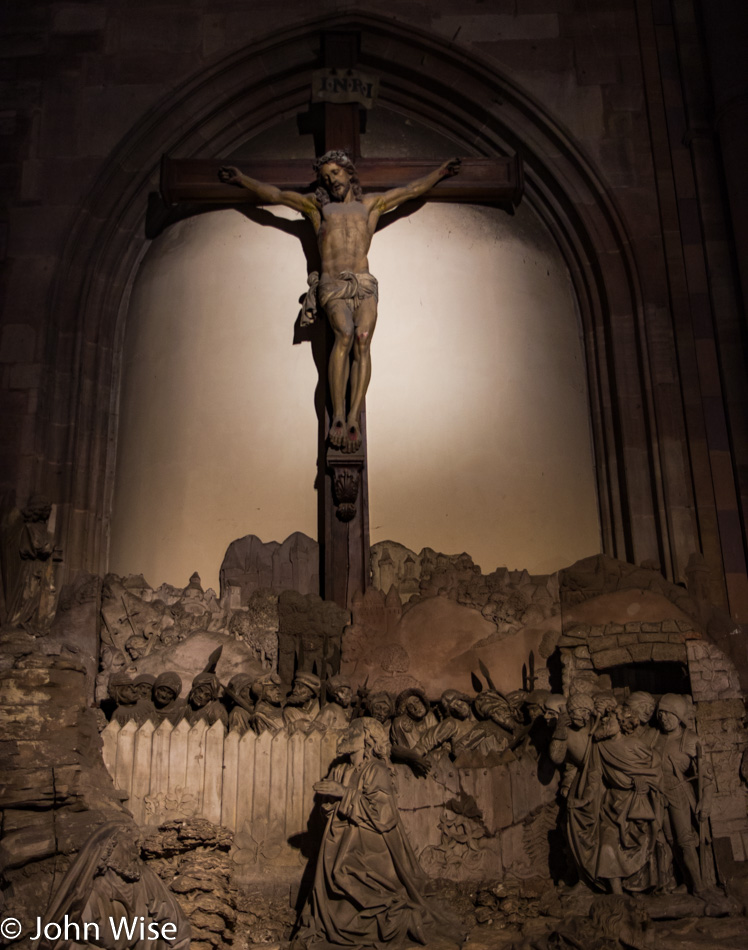
Sculpture of Jesus Christ on the Mount of Olives in the transept of the cathedral.
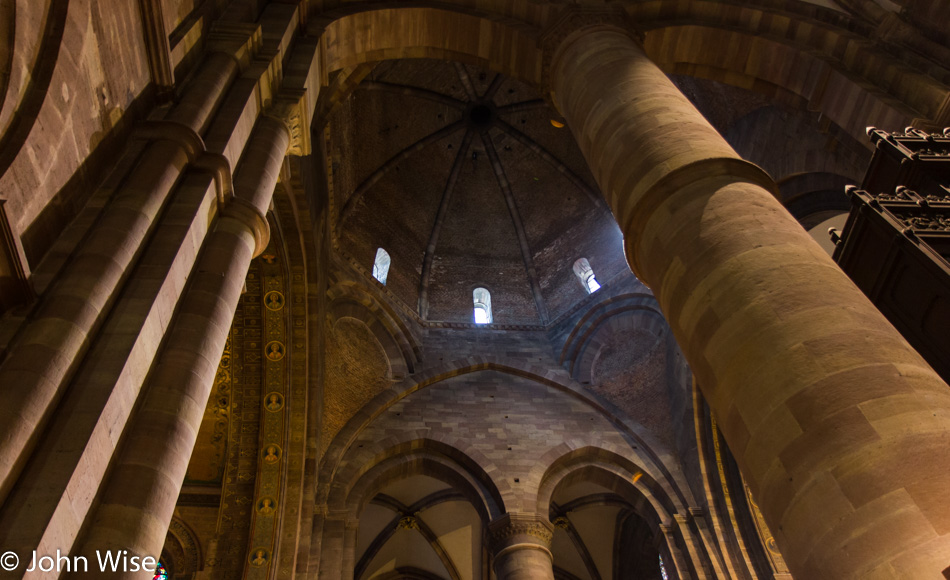
One hour, one visit, and in this time, I must bring in all that I may ever see with my own two eyes. How fortunate I am to have photographs to jog the memories of the exact conditions that were found in the Strasbourg Cathedral on the very day I was here with Caroline. I don’t believe any of it will look quite the same for anyone else who has visited or will visit in the future. For the past 8,742,500 hours, this place of worship has stood here, and of those millions of hours, I get but one.
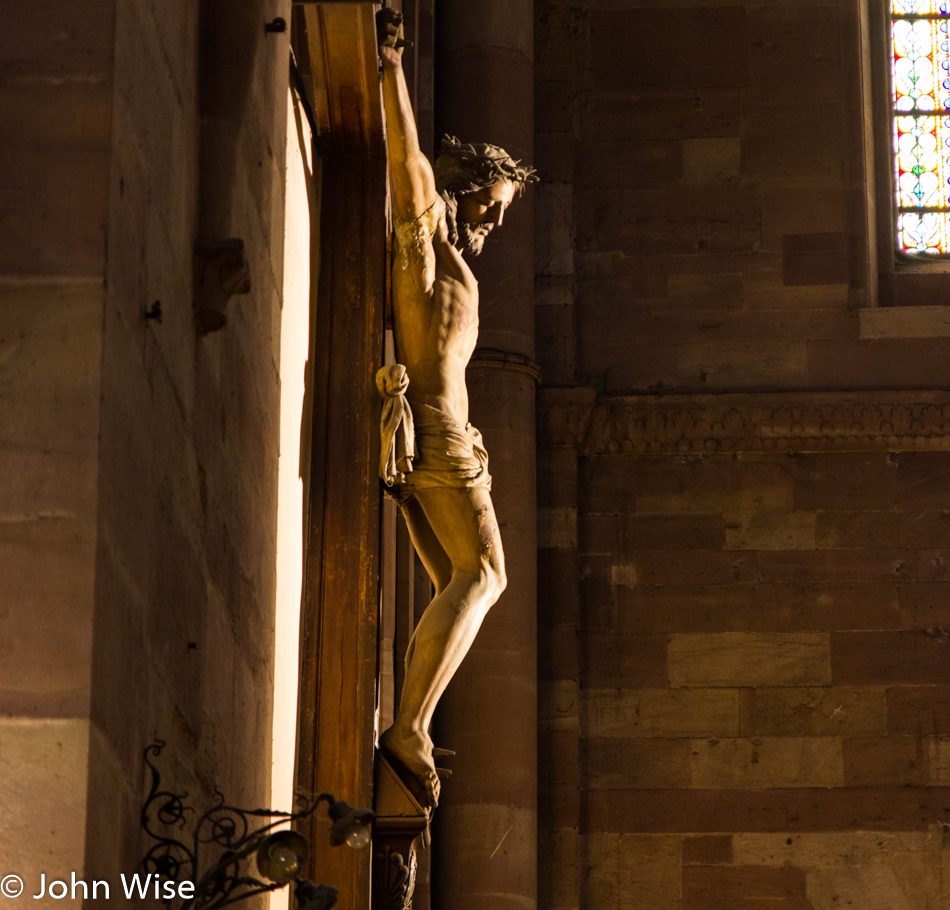
There’s no denying the iconography of the church is poetic and often beautiful, even in tragedy.
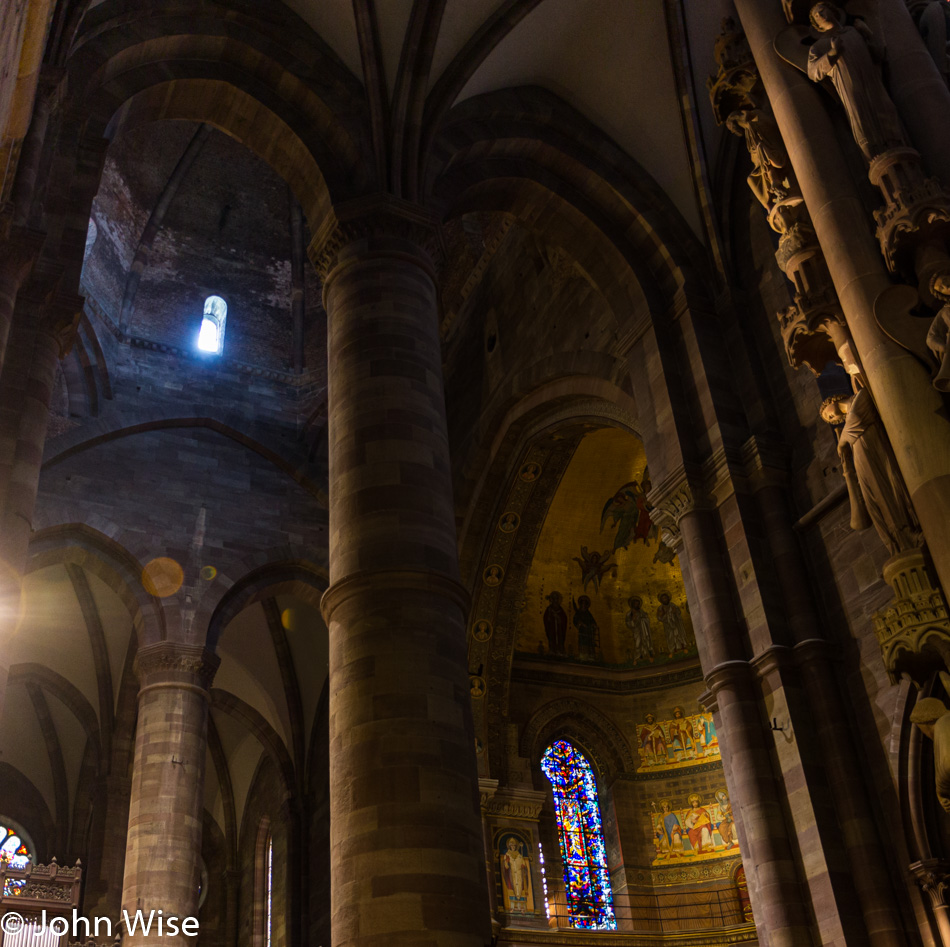
Two photos above, your gaze takes you into one corner and then to the other side, and looking back, there is so much that is different. What would things have looked like at dawn in here had we been able to visit and wait for the sun to rise? How about this evening when we’re driving home? What was the atmosphere during sunset? In two days, it will be Sunday, and the environment will again be something altogether different. I wish I could have hung around.
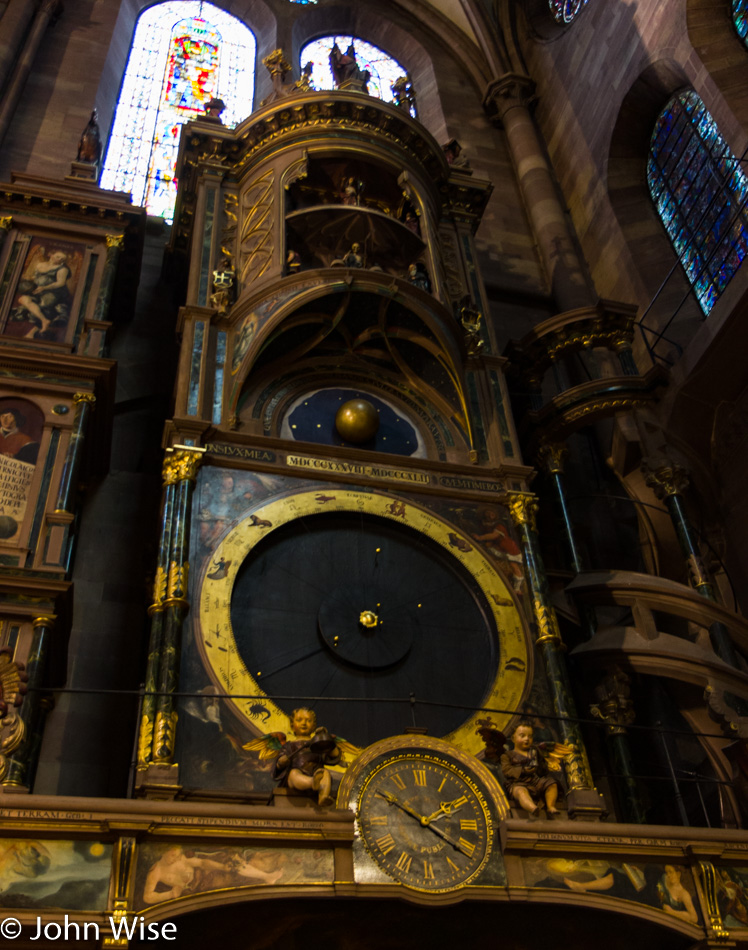
This is the third astronomical clock that has been here in Strasbourg Cathedral. The first one, built in 1352-1354, was dismantled between 1572-1574. The second one was being built on the opposite wall of the first with a golden cockerel surviving from the first clock, most of this clock is preserved in the Museum of Decorative Arts right here in Strasbourg. The third clock, which we see today, was started in 1838 and wasn’t ready for business until the summer of 1843.
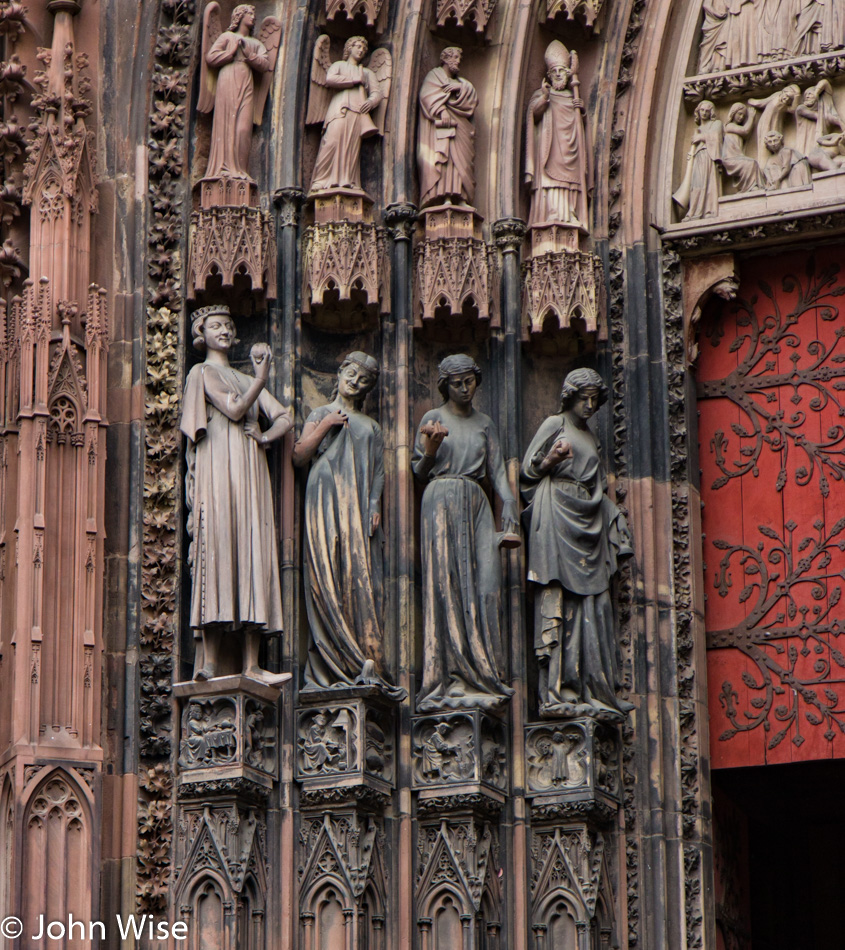
I can’t help but get lost in the intricate details that abound.
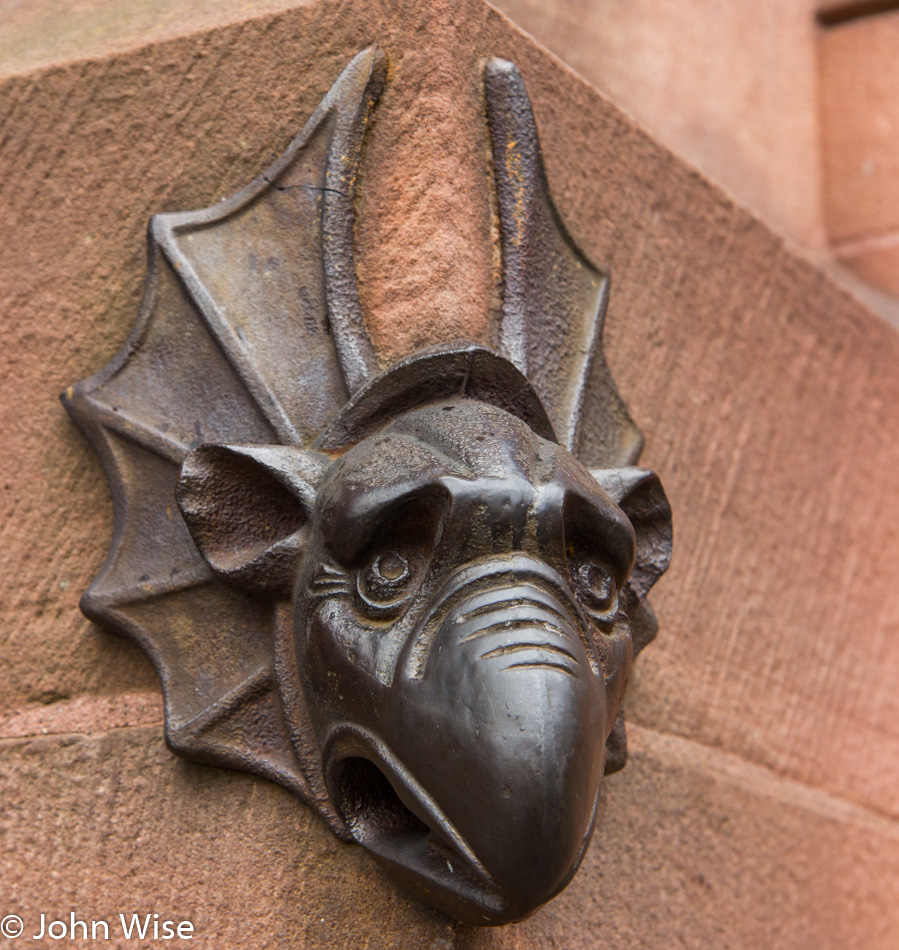
I want to drag every corner, every statue, every perspective, and every smell home with me.
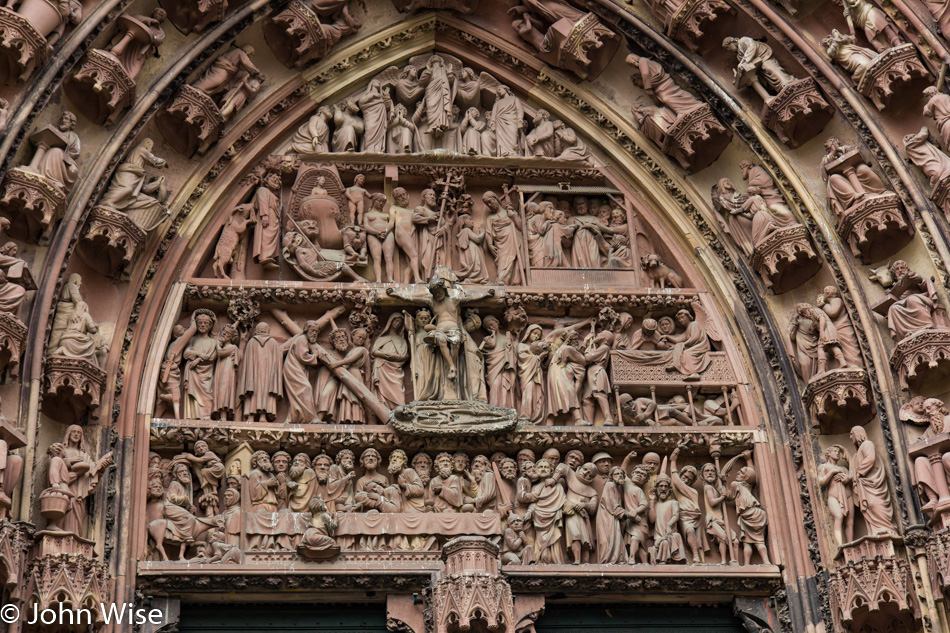
While the cathedral is nearly 1000 years old, the city of Strasbourg celebrated its 2000th birthday back in 1988.
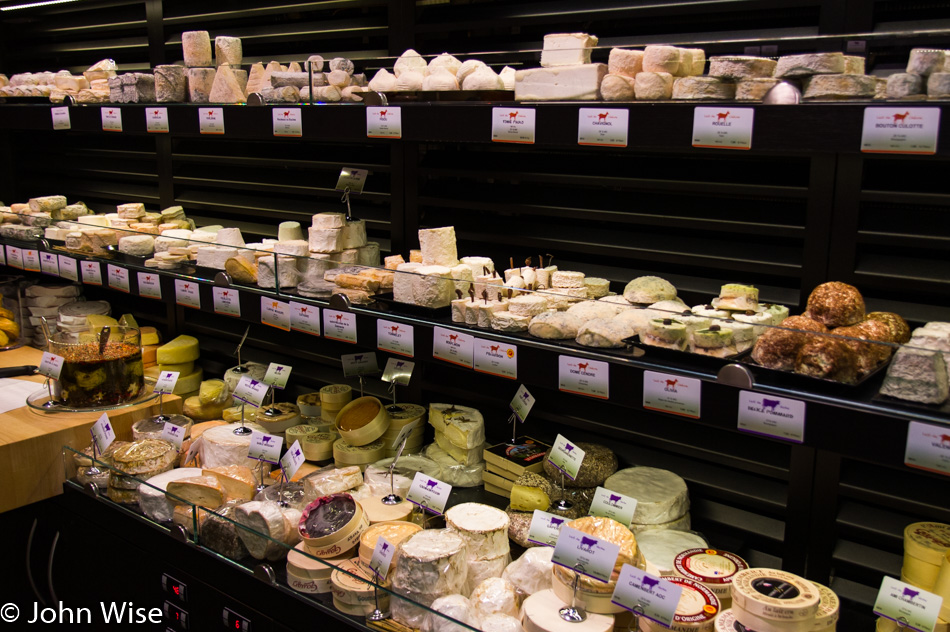
This is Maison Lorho and is almost up there with the cathedral for being a place of wonder. When we walked in, blowers over the door created an air curtain to maintain the environment inside this shop. This is effectively a cheese cave. How strange it is to my American eyes to see cheese of so many types and so much of it unwrapped, waiting for buyers. We didn’t leave with so much as a sample as we had no intention of buying any. We have 72 hours left in Europe, and cheese is not one of the items that will travel very well over the 14 hours we’ll be in transit between Frankfurt and Phoenix. We dream of this shop and nearly cry when seeing the poor selection at Whole Foods, which is still far superior to any of our grocery stores. Even the average grocery store on the side of the road between Montreal and Quebec in Canada has a better selection than what we find in Arizona. I think Americans are closet cheese haters unless we are talking about the individual yellow slices wrapped in plastic we call cheese.
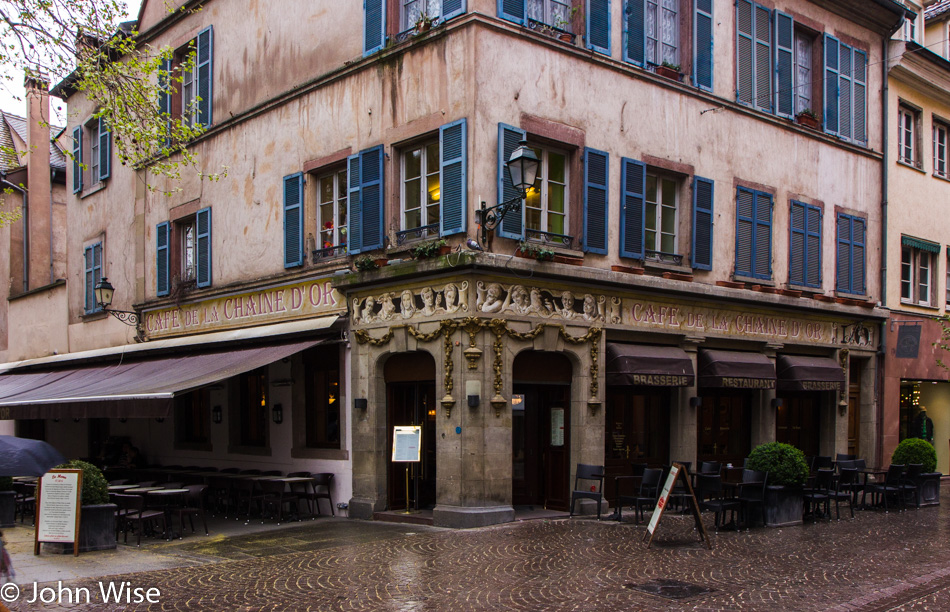
Cafe De La Chaîne D’Or has been here since 1522 and is on our radar for that return visit. The Alsatian specialties on the menu have me drooling while I write this, just as the sauerkraut specialties on the Kammerzell House menu were doing to me as I was writing that.
Update: as of late November 2023, the cafe has permanently closed.
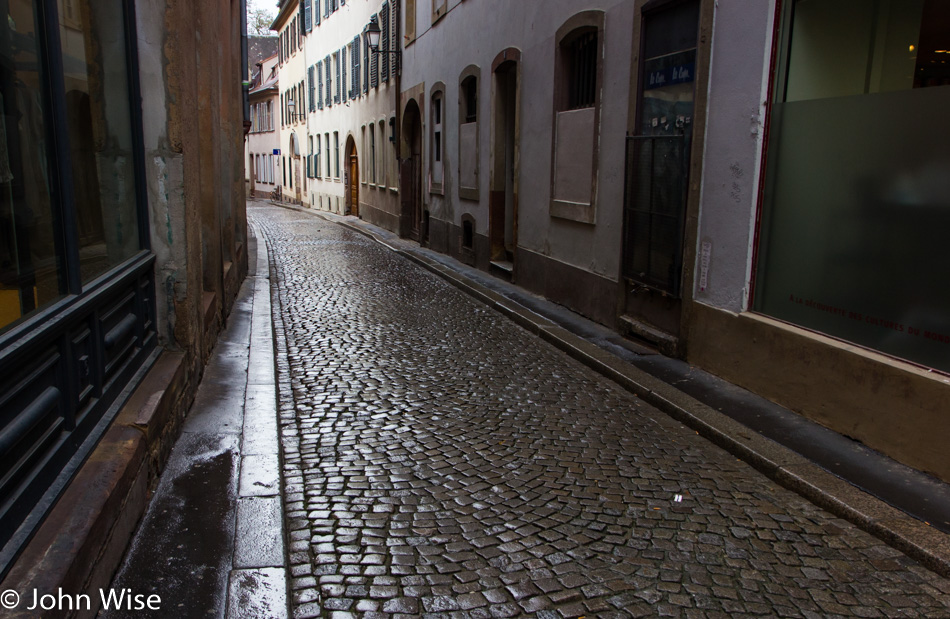
Sure, the sun would have been nice, but glistening cobblestones have their own touch of magic.
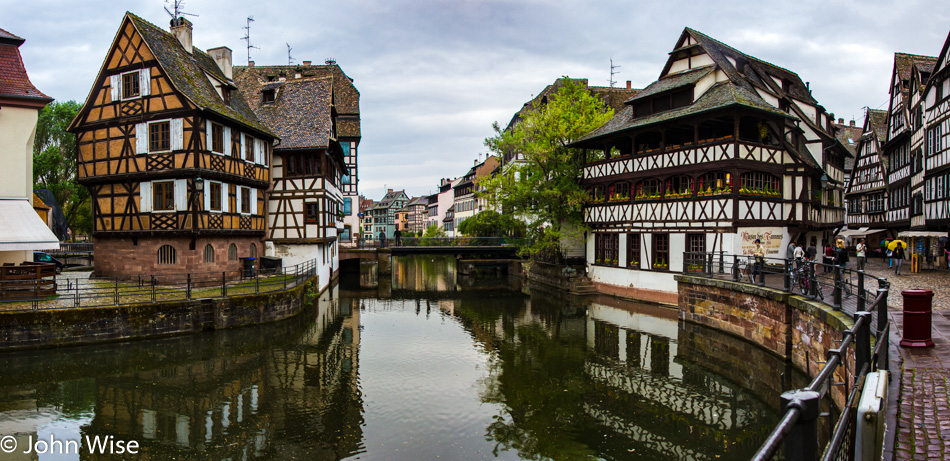
The money shot was found right here at the intersection of Petite France.
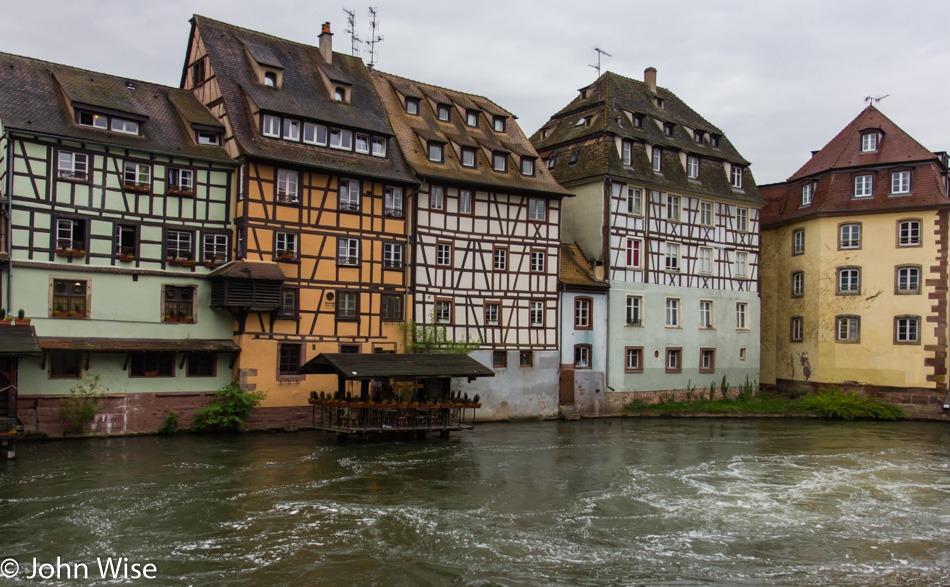
On our way, we chase steeples while also taking the time to see more of the Grand Island here in the center of Strasbourg.
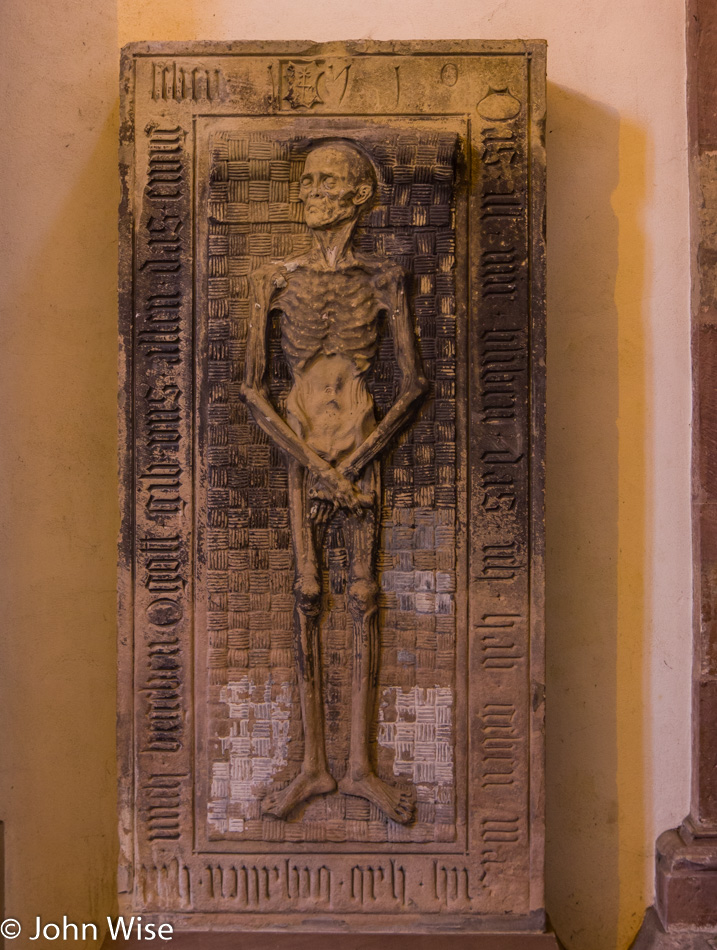
This is the Renaissance tombstone of Nikolaus Roeder von Tiersberg, who died in 1510; he’s also the person who gifted the Sculpture of Jesus Christ on the Mount of Olives we saw earlier in the cathedral. I should point out that we are at St. Thomas’ Church.

Quite the ornate Mausoleum of the Marshal of Saxony here in St. Thomas’. I’d never heard of him, but to the Germans, he was Hermann von Sachsen; to the French Maurice de Saxe, but at his core, he was the son of Augustus II the Strong, King of Poland and Elector of Saxony. You can learn a lot about history by visiting the old churches in Europe.

A stop at Super Hamburger on Rue Des Hallebardes, where they feature “Famous Sausages,” was our ticket for some fast French street food. With this final stop, it was time for the two-hour drive back to Frankfurt.